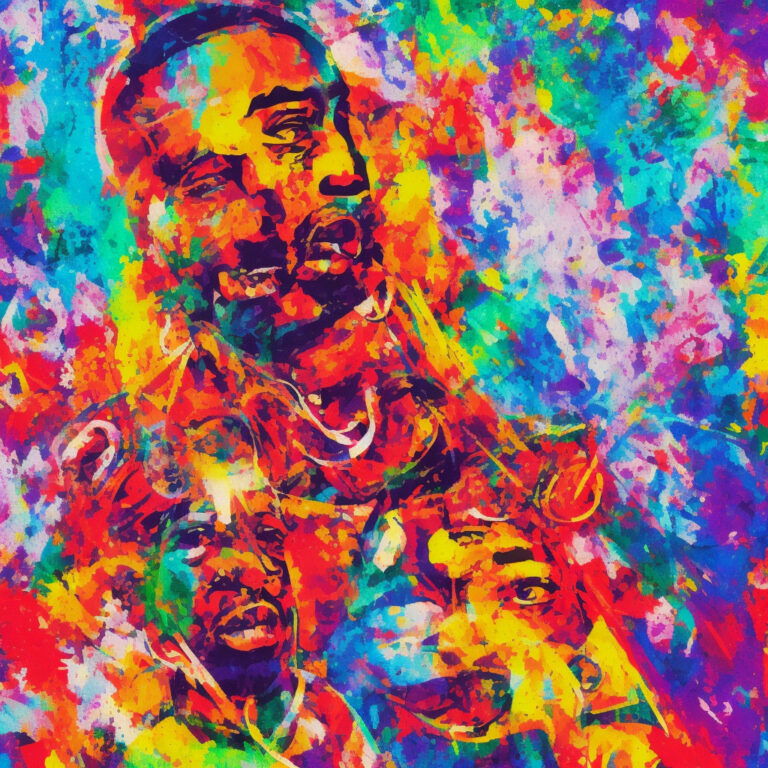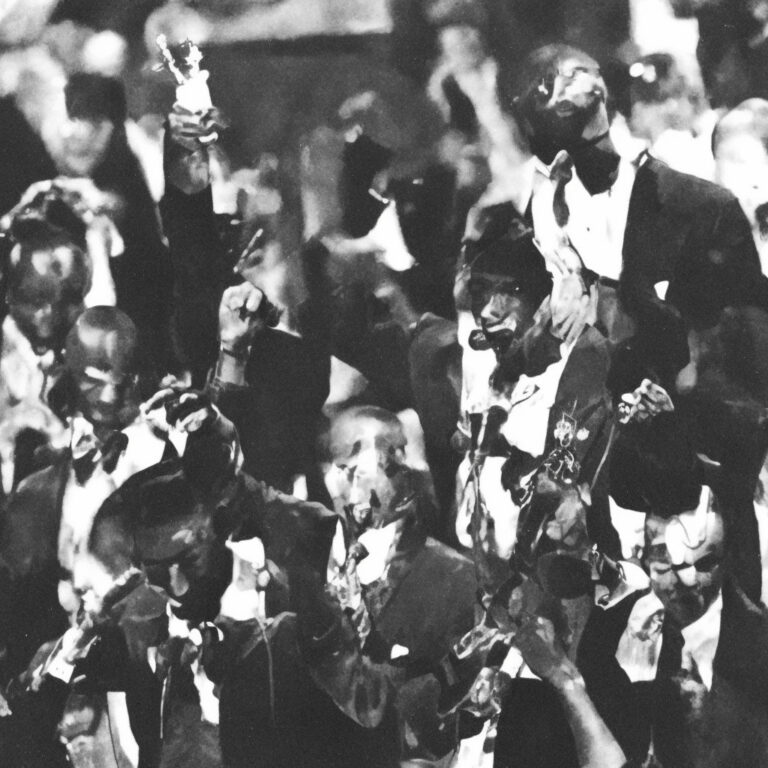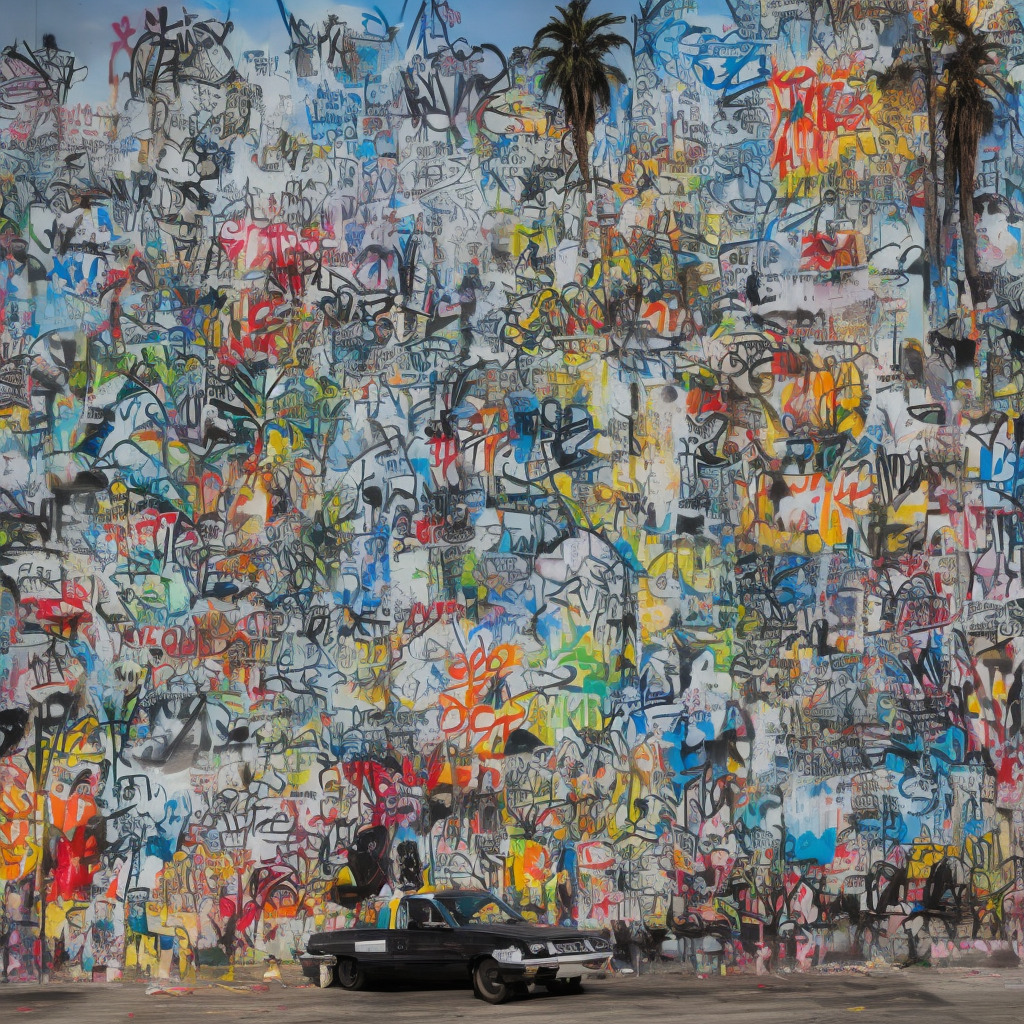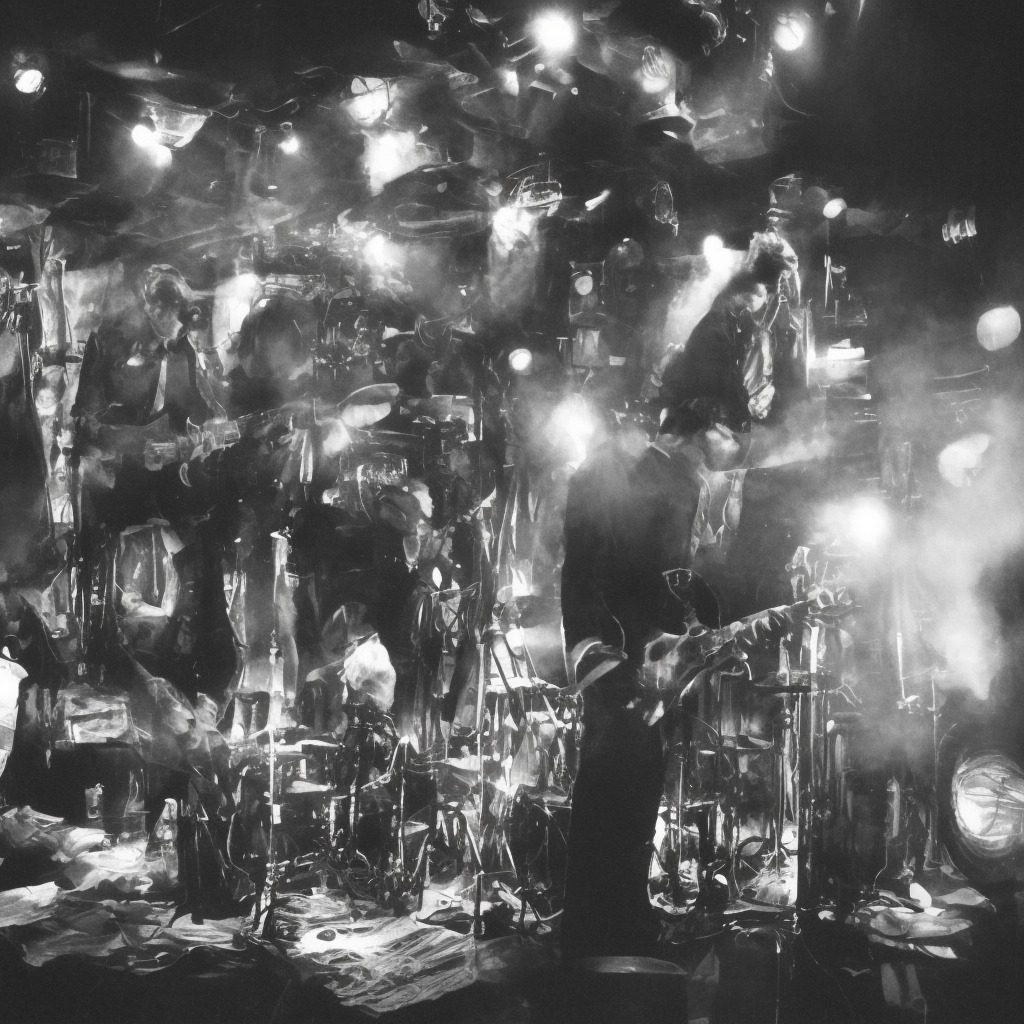🎶 Did ya know? #Tupac wrote “To Live & Die in L.A.” in just 15 minutes! 🤯 A true ode to the City of Angels, this ’96 bop still got us vibin’! 🌇🎧 #ThrowbackThursday #HipHopTrivia #2PacLivesOn Read about it: tinyurl.com/4u8354p4
Exploring the Depth and Impact of Tupac Shakur’s Unforgettable Tribute to L.A.
Delve into Tupac’s love letter to L.A. with “To Live & Die in L.A.”, an enduring testament to the rapper’s introspective side, vivid storytelling, and lasting influence on the music world.

Tupac Shakur, also known as 2Pac, remains one of the most influential and iconic figures in the history of hip-hop. Born in East Harlem, New York City, Tupac Shakur was an emblematic rapper, actor, and poet who boldly addressed the contemporary social issues affecting African Americans in the nineties. Throughout his career, Tupac released several classic albums, including “All Eyez on Me” and “Me Against The World.” Despite his tragic and untimely death in 1996, his profound legacy continues to impact generations of artists and fans alike.
One of the many standout tracks from Tupac’s discography is “To Live & Die in L.A.,” a song that pays homage to his adopted city of Los Angeles, California. Released as the second single from the 1996 album “The Don Killuminati: The 7 Day Theory,” under the pseudonym of Makaveli, this track celebrates the beauty, struggles, and resilience of the City of Angels. The song’s infectious melody, featuring singer Val Young, combined with Tupac’s reflective and poignant lyrics, resonated with fans and critics alike, making it an essential piece of his work.
Though Tupac’s career was often marred by his controversial image, stemming from legal troubles and a highly publicized rivalry with the East Coast rap scene, “To Live & Die in L.A.” showcases a more introspective and vulnerable side of the rapper. The track delves into themes of love, loyalty, and the harsh realities faced by those living in Los Angeles, painting a vivid picture of a city that became a central part of Tupac’s life and artistic journey.
Throughout his career, Tupac received numerous awards and accolades, further solidifying his status as one of the greatest rappers of all time. Some of his well-deserved recognitions include multiple American Music Awards, MTV Video Music Awards, and Soul Train Music Awards. In 2017, Tupac Shakur was posthumously inducted into the Rock and Roll Hall of Fame, a testament to his lasting impact on the music world.
In conclusion, Tupac Shakur’s “To Live & Die in L.A.” is not only a heartfelt tribute to the city he cherished, but also an enduring reminder of the rapper’s ability to capture the complexities of life through his music. As an experienced music blogger, I can safely say that this track remains a vital piece of Tupac’s legacy that continues to resonate with fans and up-and-coming artists alike.
Charting the Journey of a West Coast Anthem
“To Live & Die in L.A.” – Tupac Shakur’s posthumous ode to Los Angeles transcends controversy to become a globally cherished West Coast hip-hop classic.

“To Live & Die in L.A.” by Tupac Shakur was released as a single on September 13, 1996, just six days after the artist’s untimely death. The song is a tribute to the city of Los Angeles, and it quickly became an anthem for the West Coast hip-hop scene. The track features artist Val Young, and it is the second single from Tupac’s fifth studio album, “The Don Killuminati: The 7 Day Theory,” which was released under his pseudonym, Makaveli.
Upon its release, “To Live & Die in L.A.” entered the Billboard Hot 100 chart at an impressive position of No. 82, a testament to the anticipation and popularity of Tupac’s music. The song continued to climb the charts, eventually peaking at No. 10 on October 26, 1996. It also performed well on the Billboard Hot R&B/Hip-Hop Songs chart, reaching a peak position of No. 6.
While the song’s chart success is notable, its cultural impact is perhaps even more significant. “To Live & Die in L.A.” has been referenced and sampled in numerous songs by artists who were inspired by Tupac and his love for Los Angeles. It is now considered a classic West Coast hip-hop track, and it remains a popular and enduring tribute to both Tupac’s life and the city he called home.
In addition to its success on the US charts, “To Live & Die in L.A.” also attained international recognition. The song charted in several countries, including the United Kingdom, where it peaked at No. 18 on the UK Singles Chart. It also found a place on the charts in countries like Australia, Germany, and the Netherlands, showcasing Tupac’s global appeal and influence.
Despite its chart success and lasting impact, “To Live & Die in L.A.” was not without controversy. Like many of Tupac’s songs, it faced criticism for its explicit language and portrayal of street life. However, these criticisms have not hindered the song’s enduring popularity and its place in the annals of hip-hop history.
In summary, “To Live & Die in L.A.” by Tupac Shakur stands as a testament to the artist’s talent and passion for his city. Its chart success both in the United States and internationally speaks to the influence and reach of his music, and its lasting cultural impact ensures that it will continue to be celebrated as a classic West Coast anthem for years to come.
Unraveling the Lyrical Layers of “To Live & Die in L.A.”
“To live and die in L.A., it’s the place to be
You’ve got to be there to know it, what everybody wanna see
To live and die in L.A., it’s the place to be
You’ve got to be there to know it, what everybody wanna see…”
Tupac Shakur’s “To Live & Die in L.A.” is an iconic anthem that represents the sentiments, aspirations, and struggles of living in the City of Angels during the ’90s. The lyrics of the song provide an intimate look into the artist’s perspective on the city and the spirit of the time.
One of the primary themes in the song is the duality of life in Los Angeles. The city is portrayed as a place where dreams can come true, but the reality of daily life can be harsh. Tupac highlights the challenges faced by people in the city, including gang violence, drugs, and poverty. This was a time when Los Angeles was facing an unprecedented surge in crime, and the song reflects the mood of the city during that era.
“It’s either, you roll or you get rolled on
We ain’t the one that tripped or slipped or got crept on
N****z that got slept on, just to live in L.A.
Another example of how we live in L.A.”
In addition to the struggles faced by the city’s residents, the lyrics of “To Live & Die in L.A.” also celebrate the cultural vibrancy and diversity of the city. The song pays tribute to the melting pot of cultures that existed in Los Angeles during the ’90s, which contributed to the city’s unique essence.
“Mexicans, blacks and whites, they never wonder
Cause they know we ain’t gon’ stop, we out for numbers
Gangbangin’, slangin’ dope and clockin’ dollars
Flip the money, dump the hoes and rock the collars”
Tupac’s “To Live & Die in L.A.” captures the essence of a city in turmoil but also filled with dreams and hope. The lyrics reveal the struggles that its people faced while also paying tribute to the unique culture and resilience of Los Angeles. The song serves as a powerful reminder of the spirit of the time and the events that shaped the city during that pivotal era.
The Visual Journey of “To Live & Die in L.A.”
Capturing the raw essence of L.A. and Tupac’s love for the city, the “To Live & Die in L.A.” music video serves as an enduring testament to the late rapper’s legacy and the power of authentic storytelling.
When it comes to the music video for Tupac Shakur’s iconic track “To Live & Die in L.A.,” director J. Kevin Swain was tasked with the challenge of capturing the essence of the City of Angels while also representing the late rapper’s personal attachment to the place he called home. Swain, a seasoned music video director, has worked with a diverse roster of artists ranging from Aaliyah to Ice Cube, and this experience shines through in his approach to this visual masterpiece.
Shot in 1996, the video features sweeping aerial shots of the Los Angeles skyline, intercut with scenes of Tupac driving through various neighborhoods, showcasing the city’s diverse culture and landscapes. The visual storytelling also complements the song’s lyrics, as Tupac raps about the struggles and joys of life in L.A. while providing a glimpse into the places that shaped his experiences.
The video’s production was a relatively low-budget affair, but this doesn’t detract from its impact. In fact, it’s the authenticity and rawness of the visuals that make it so memorable. The decision to film primarily on-location in various L.A. neighborhoods adds a level of realism and immersion that can’t be replicated on a soundstage.
An interesting aspect of the video is the presence of several local L.A. artists and Tupac’s close friends, such as Big Syke and rapper/producer DJ Quik. This reinforces the close-knit community that Tupac was a part of and illustrates the camaraderie of the West Coast hip-hop scene at the time. Additionally, footage from Tupac’s funeral procession can be seen at the end of the video, serving as a poignant reminder of his untimely passing.
While there isn’t an official high-resolution version of the “To Live & Die in L.A.” music video available on YouTube, fans have taken it upon themselves to upload various versions of the video, some even offering remastered visuals and audio. These fan uploads serve as a testament to the enduring legacy of Tupac Shakur and the impact his music continues to have on generations of listeners.
In conclusion, the music video for “To Live & Die in L.A.” remains an essential piece of hip-hop history and a fitting tribute to the enigmatic artist who so deeply loved the city he represented. Its raw visuals, authentic locations, and emotional narrative are a testament to the directorial prowess of J. Kevin Swain and the lasting influence of Tupac Shakur.
A Look into the Musical Genius of Tupac Shakur
Tupac Shakur, the prolific composer behind “To Live & Die in L.A.”, was a widely influential figure in the world of music. Throughout his career, he explored numerous themes and styles in his compositions, which resonated deeply with his audience. Shakur’s contributions to the music industry were not just limited to “To Live & Die in L.A.”; the legendary artist was also responsible for iconic songs like “California Love” featuring Dr. Dre, “Dear Mama,” and “Hit ‘Em Up.” His unique blend of poetic lyricism and powerful beats earned him a well-deserved reputation as one of the greatest rappers and songwriters in history.
Award-Winning Track with Impact Beyond Music
“To Live & Die in L.A.” – A timeless Tupac anthem transcending music into film, TV, and gaming, fueling the West Coast ambiance and inspiring generations.

“To Live & Die in L.A.” was released as the second single from Tupac Shakur’s fifth and final studio album, “The Don Killuminati: The 7 Day Theory”, under the pseudonym Makaveli. The song has not only enjoyed commercial success, but has also garnered critical acclaim, solidifying its place in the annals of hip hop history.
In 1997, this iconic track received the ASCAP Rhythm & Soul Music Award for Rap Song of the Year, a testament to Tupac’s lyrical prowess and the song’s enduring appeal. Over the years, “To Live & Die in L.A.” has been recognized as one of the greatest hip hop tracks of all time, making its way onto numerous “best of” lists from renowned music publications and websites.
Beyond the realm of music, “To Live & Die in L.A.” has left its mark on various forms of media, such as film and television. The song made an appearance in the 2001 biographical crime drama “Training Day”, starring Denzel Washington and Ethan Hawke. Additionally, its unmistakable beat and poignant lyrics have been featured in numerous TV series, including the critically acclaimed “Snowfall”, which explores the early days of the crack cocaine epidemic in Los Angeles.
Video game enthusiasts can also attest to the impact of “To Live & Die in L.A.”, as the track made its way onto the soundtrack of the popular 2004 video game “Grand Theft Auto: San Andreas”. The game, set in a fictional city inspired by Los Angeles, heavily features the music of the early 1990s, with “To Live & Die in L.A.” serving as a perfect fit for its West Coast ambiance.
As a testament to the lasting appeal and influence of “To Live & Die in L.A.”, several artists have paid homage to Tupac through their own renditions of the song. Notably, rapper The Game released a tribute track titled “To Live & Die in L.A.” in 2017, honoring the 21st anniversary of Tupac’s death. Other artists, such as Lil B, Prodigy, and Dom Kennedy, have also sampled portions of the song in their own work.
Ultimately, “To Live & Die in L.A.” remains an integral part of Tupac Shakur’s musical legacy, with its impact resonating throughout various forms of media and serving as an inspiration for current and future generations of artists.
Breaking Down the Melody
“To Live & Die in L.A.” offers a rich musical experience thanks to its well-crafted arrangement and production. The song is written in the key of E minor, which gives it a melancholic edge that complements the introspective lyrics. It is also built on a foundation of a sampled loop from the song “Do Me, Baby” by Prince, which provides a smooth and groovy backdrop for Tupac’s storytelling.
The song’s chord progression follows a simple yet effective pattern: Em – D – C – Bm, which repeats throughout the track. This progression lends a sense of familiarity and comfort to the listener, allowing them to focus on the intricate storytelling and the emotions conveyed by the lyrics. The tempo of the song clocks in at a moderate 96 beats per minute, further emphasizing the laid-back and introspective nature of the track.
One of the most unique aspects of “To Live & Die in L.A.” is its use of instruments not commonly found in hip-hop music. The track features a beautiful and haunting piano melody, played in a higher register, which adds to the overall melancholy atmosphere. Additionally, the inclusion of several guitar licks and a warm bassline enhances the song’s depth and creates an immersive listening experience.
Another noteworthy element of the song is Tupac’s flow and delivery. Throughout the track, he showcases his exceptional storytelling abilities by switching between different rhythmic patterns and cadences. This adds a layer of complexity to the song and keeps the listener engaged from start to finish. Moreover, the use of backing vocals in the chorus section provides a sense of unity and harmony, further strengthening the overall message of the track.
In conclusion, “To Live & Die in L.A.” is a prime example of Tupac Shakur’s musical prowess and his ability to create complex and emotionally charged songs. From its captivating chord progression and tempo to its unique instrumentation and masterful delivery, this track stands as a testament to the depth and versatility of hip-hop music.







